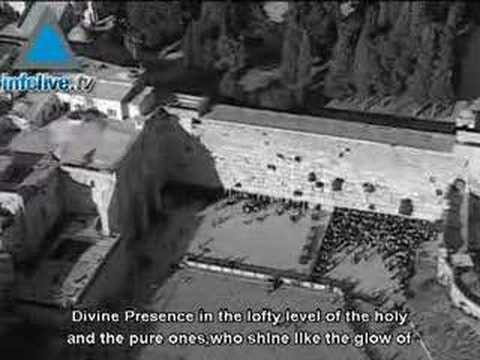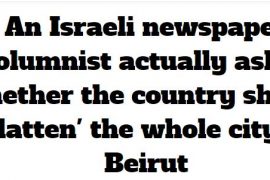Cross posted at Jewish Ideas Daily
This week, Jewish Ideas Daily commemorates the forty-fifth anniversary of the Six-Day War with a day-by-day synopsis, for which we are indebted to Michael Oren’s comprehensive Six Days of War.
As Nasser was ordering his army to flee the Sinai, King Hussein commanded his to stay put. But within the Old City, only a hundred soldiers remained, the rest having already retreated toward the East Bank. Doubting that he could retain the city by force, Hussein opted to negotiate an immediate ceasefire. The Jordanian Prime Minister, Sad Juma, petitioned both the UN and the U.S. Ambassador, Findley Burns, Jr., to convince Israel not to seize the Old City or Nablus. If Israel did, he warned, the Hashemite monarchy could collapse. Relaying the message to President Johnson, Burns perceived a much more dangerous threat: The Soviets could intervene.
Wary of Nasser’s wholly unsubstantiated allegations of direct American support for Israel, Johnson neglected to recommend any course of action to Eshkol—short of informing him of the offer, and warning, from Hussein. More problematic was an impending Security Council decision, coupled with the gradual return of Jordanian troops to the Old City. If they couldn’t win the battle, they could at least delay the Israelis until the Security Council stepped in. Eshkol, Dayan, and Rabin agreed: for Israel to retake the Old City, she had to act now.
As the sun rose on June 7th, 1967, artillery started shelling the area around the Augusta Victoria hospital east of the Old City, swiftly followed by air raids, clearing the way for paratroopers. The soldiers proceeded southwest, taking the Mount of Olives, and then descending the hillside until they stood outside Lions’ Gate. They were soon joined by tanks, which opened fire, cleaving the gate. The troops charged into the square, through a hail of gunfire from Legionnaires on the walls and rooftops, and onwards into the city’s narrow, medieval streets. As soldiers spread out, heading for the Via Dolorosa, the Damascus, Jaffa, and Zion Gates, Lt. Gen. Mordechai Gur led his men up to the Temple Mount. After another exchange of fire, Gur relayed back the words that the country was waiting to hear, now immortalized: “Har ha-Bayit b’Yadenu”—”The Temple Mount is in our hands.”
[youtube=http://www.youtube.com/watch?v=7l1ol69rRxo&feature=player_embedded]
But the Temple Mount was still not the biggest prize: Gur had yet to take the Kotel. But neither he nor any of his men knew the way down. At a loss, Gur asked directions from an old Arab man. But this time, Gur was beaten to the punch. Men from the Jerusalem Brigade and the 71st Paratroopers Battalion were already there—celebrating, in spite of the continuing sniper fire.
In an interview with the Observer‘s Conal Urquhart, Zion Karasenti, who appears in David Rubinger‘s iconic photo, claimed to have been the first to the wall—though at the time he had no idea where he was:
I was the first paratrooper to get to the Wailing Wall. I didn’t know where I was, but I saw a female Israeli soldier, so I asked “Where am I?” and she said: “The Wailing Wall.” She gave me a postcard and told me to write to my parents before she disappeared. It might have been a dream, but then many years later I met the woman. She had been in the postal corps.
Paratrooper Moshe Amirav, who left his hospital bed to visit the Kotel after hearing of its capture on the radio, recalls following in Gur’s footsteps down from the Temple Mount through Mughrabi Gate:
We ran there, a group of panting soldiers, lost on the plaza of the Temple Mount, searching for a giant stone wall. We did not stop to look at the Mosque of Omar even though this was the first time we had seen it close up. Forward! Forward! Hurriedly, we pushed our way through the Magreb Gate and suddenly we stopped, thunderstruck. There it was before our eyes! Gray and massive, silent and restrained. The Western Wall!
Among Gur’s party was Shlomo Goren, the IDF’s Chief Rabbi, who said kaddish and then blew the shofar—perhaps heralding the advent of the Messiah. Goren suggested to Dayan, Rabin, and General Uzi Narkiss, who had arrived in a triumphant procession, that the IDF use its remaining ammunition to destroy the mosques in anticipation of the reconstruction of the Temple.
But Eshkol had preempted Goren’s reverie. Refusing to be caught up in the euphoria, unlike the rest of the country—including his senior officers—Eshkol had placed the holy sites of the Old City under the jurisdiction of their respective religious authorities. Moreover, as his forces continued their conquest of the West Bank, he was already starting to worry about what to do with its inhabitants.
Similarly cut off from the Jerusalem fever were the troops still fighting in the Sinai. In the early hours of the morning, an aerial reconnaissance mission went to scout what were presumed to be redoubtable Egyptian defenses at Sharm el-Sheikh, only to find it deserted. The garrison at Sharm el-Sheikh had received orders directly from Amer to fall back. A similar scene awaited Israeli soldiers in the central Sinai. The second line of the Egyptian defense had dissolved into isolated pockets of resistance, as the troops fled back towards the Suez Canal, burning their own bases as they went. The Israelis gave chase, aiming to circumvent the Egyptians and cut off their escape. But with men and burning vehicles clogging the roads, the Israeli advance was held up by the Egyptian retreat.
[youtube=http://www.youtube.com/watch?v=OnsMfKmaizE&feature=player_embedded]
Meanwhile, cognizant of the collapse of the Arab forces, the USSR issued Eshkol an ultimatum: “If Israel does not comply immediately with the Security Council Resolution, the USSR will review its relations with Israel [and] will choose and implement other necessary steps which stem from the aggressive policy of Israel.” The immediate response to this new Soviet belligerence came not from Eshkol, but from Amer. Having ordered a general retreat, Amer now told those battalions which had already crossed the canal to turn around to make one last stand on the western shore.
The war was not over, but the symbolic victory was overwhelming, and the spirit of the people indelibly altered. While Eshkol and his cabinet were debating strategy, “Hatikvah” was ringing out at the Kotel and “Jerusalem of Gold” was filling the airwaves.
[youtube=http://www.youtube.com/watch?v=3fLO1KpMKak&feature=player_embedded]
Related articles
- The Six Day War: Day Two (cifwatch.com)
- The Six Day War: Day One (cifwatch.com)
- The Six Day War, and ‘A Letter to the World from Jerusalem’ in 1969 (cifwatch.com)





